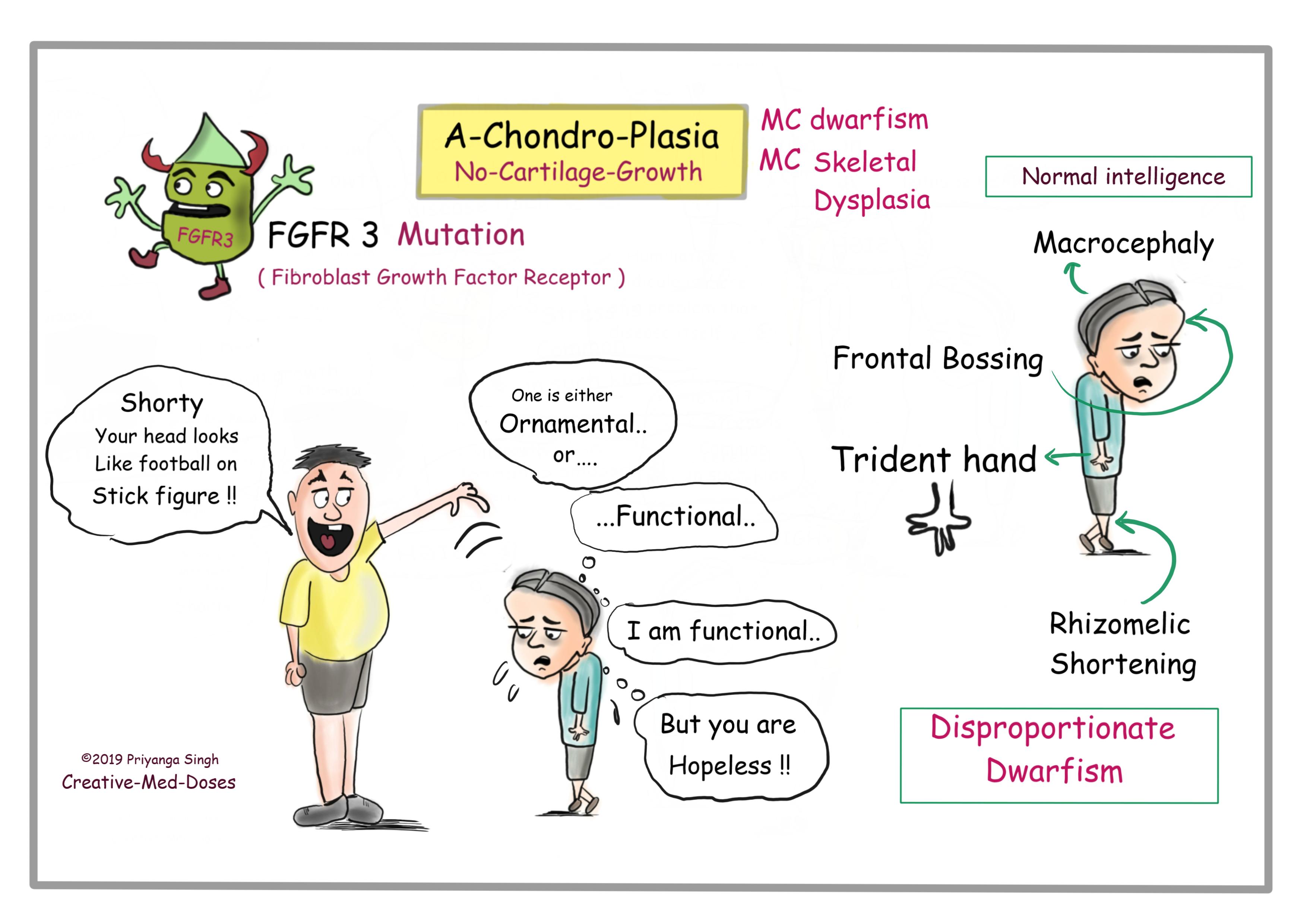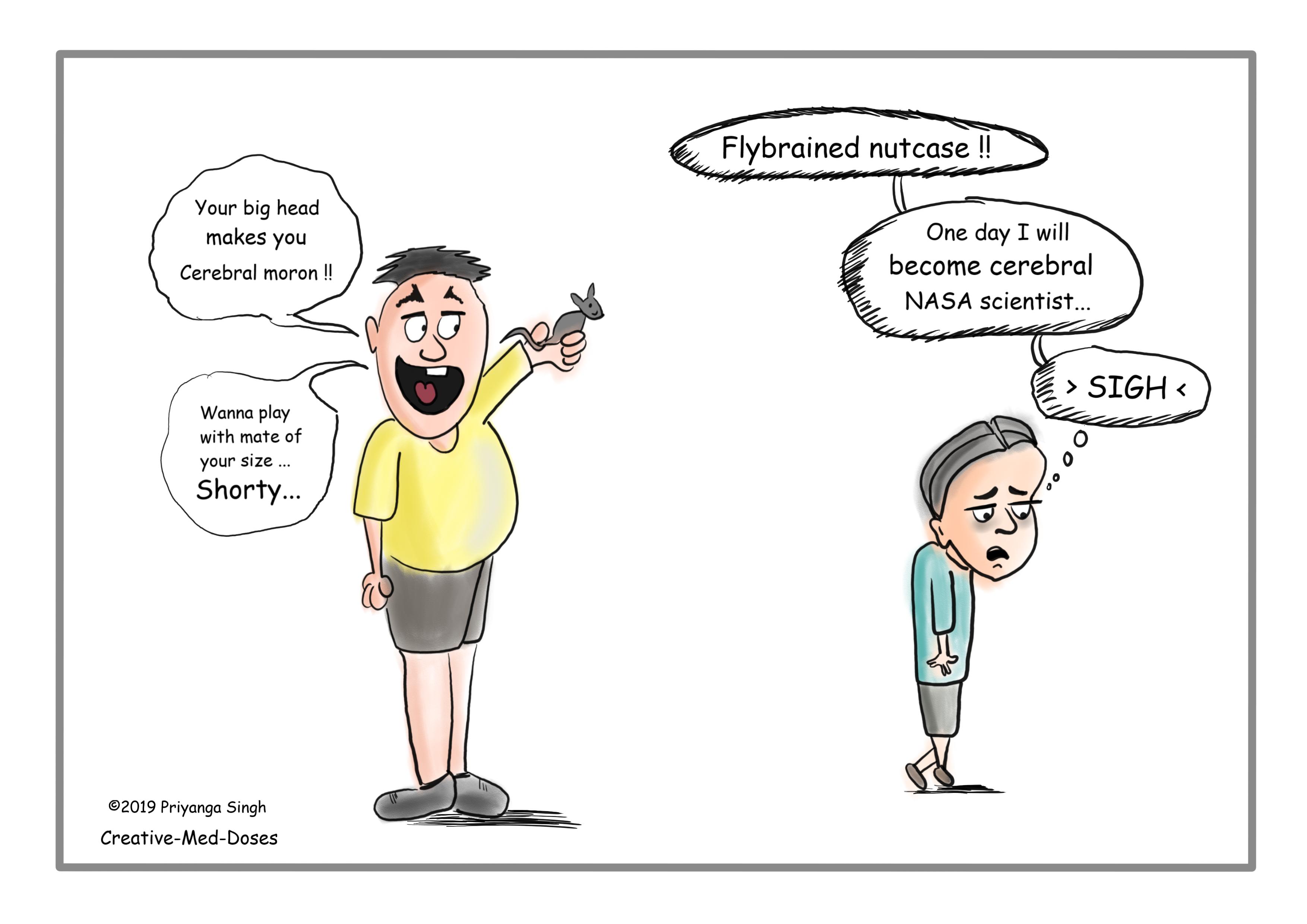Achondroplasia: Intelligent, Disproportionate Dwarf
Achondroplasia is the most common congenital skeletal dysplasia and a major cause of disproportionate dwarfism. It is an autosomal dominant disorder frequently occurs due to spontaneous mutation also called De Novo, many cases will not have an associated family history.
...

...

...
Pathogenesis
The disease is caused by gain-of-function mutations in fibroblast growth factor receptor 3 (FGFR3). FGFR3 mutation results in a constitutively active receptor, so in achondroplasia cases FGFR 3 is exaggerating this effect and suppressing growth.
FGFR3 activity suppresses chondrocyte proliferation and differentiation and thus leads to impaired long bone formation (impaired endochondral ossification – the process of bone formation over a cartilage-based ossification center – resulting in a decrease in longitudinal bone growth.).
Most sporadic mutations occur in the paternal allele and chances of such occurrence increases with increasing paternal age.
Clinical manifestation
Affected individuals have shortened proximal extremities (rhizomelic), a trunk (axial skeleton) of relatively normal length, and an enlarged head with bulging forehead (frontal bossing) and conspicuous depression of the root of the nose.
The skeletal abnormalities are usually not associated with changes in longevity, intelligence, or reproductive status, these cases have normal life span, intelligence, and reproduction.
Lumbar lordosis, macrocephaly and kyphoscoliosis can be seen.
Treatment
Monitoring, preventing, and addressing complications such as sleep apnea and kyphoscoliosis.
Stress and low self esteem related to bullying and ridicule should be addressed in time.
Case scenario
...

...
A 12-year-old boy is brought to pediatrician by his mother because she is concerned about his short stature. Child has stress and mother reports frequent episodes of crying due to harassment at school and appearance related bullying. On physical exam, frontal bossing and rhizomelic shortening of proximal extremities is noticed, axial skeleton appears to be normal. Child has normal intelligence and no history of developmental delay. His genetic testing is scheduled. What is most likely defect?
- A. Osteogenesis imperfecta
- B. Achondroplasia
- C. Hypophosphatemic rickets
- D.Pituitary dwarfism
Correct answer
B. Achondroplasia is correct answer – it is most common cause of disproportionate dwarfism with normal intelligence. rhizomelic shortening of extremities, frontal bossing and normal axial skeleton are suggestive features.
Osteogenesis imperfecta- absence of recurrent fractures, blue sclera and hearing loss rules out OI.
Hypophosphatemic rickets-absence of Bone pain and tenderness, muscle pain and difficulty in walking rules out Rickets.
Pituitary dwarfism- it is due to reduced secretion of growth hormone and the dwarfism caused by this is NOT DISPROPORTIONATE. Axial skeleton and extremities are proportionately short unlike Achondroplasia which has disproportionate dwarfism.
Further Reading https://ojrd.biomedcentral.com/articles/10.1186/s13023-018-0972-6
Revision for today https://creativemeddoses.com/topics-list/type-1-hypersensitivity-immediate/